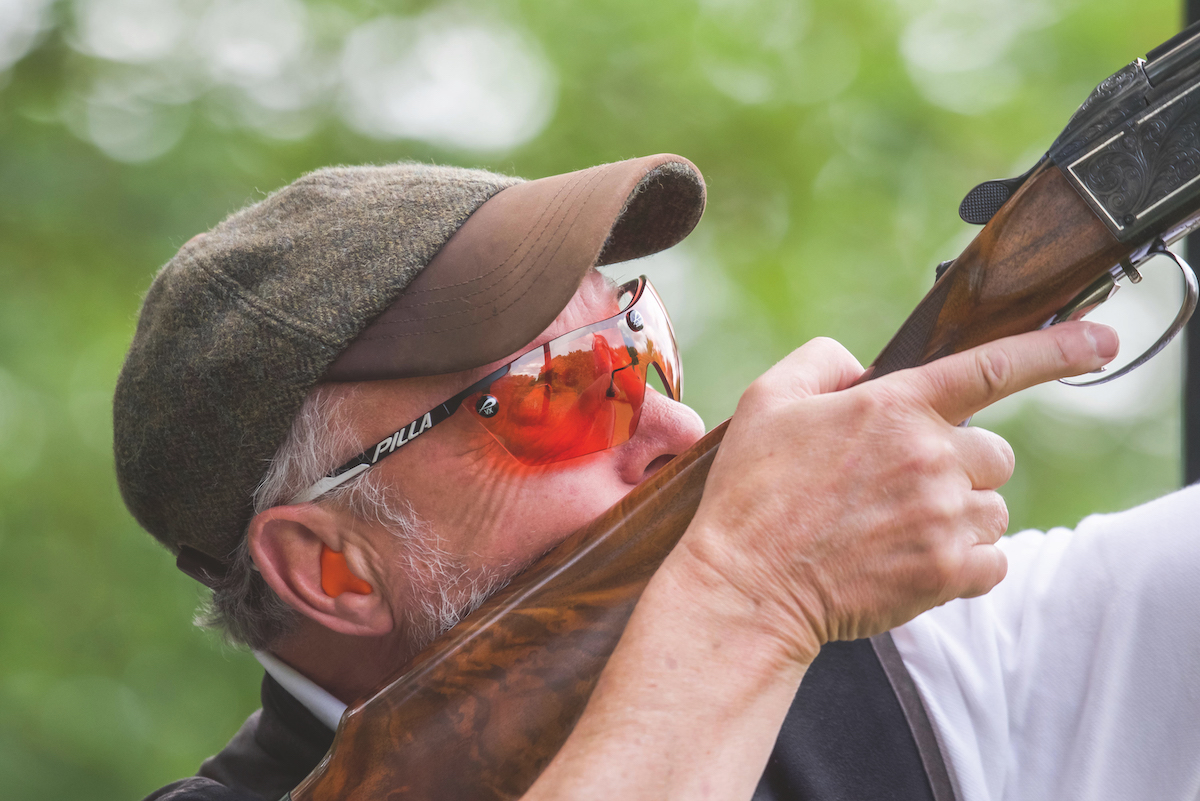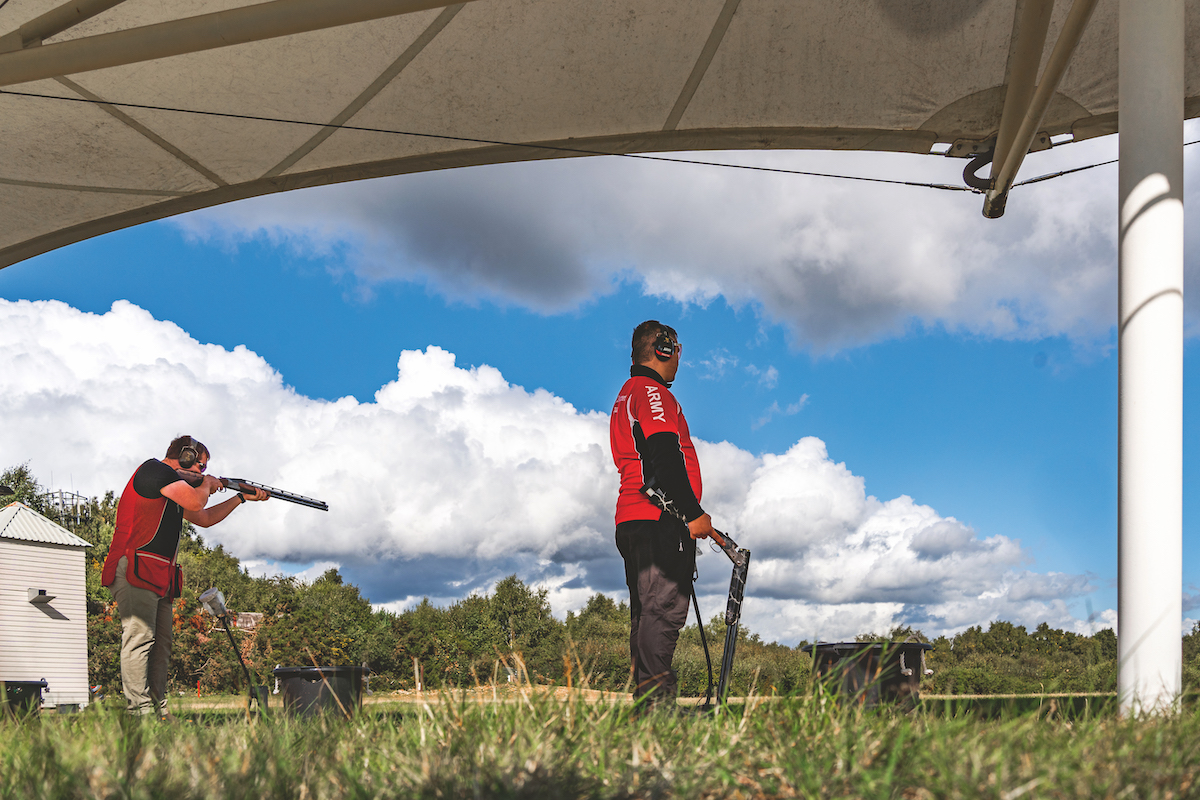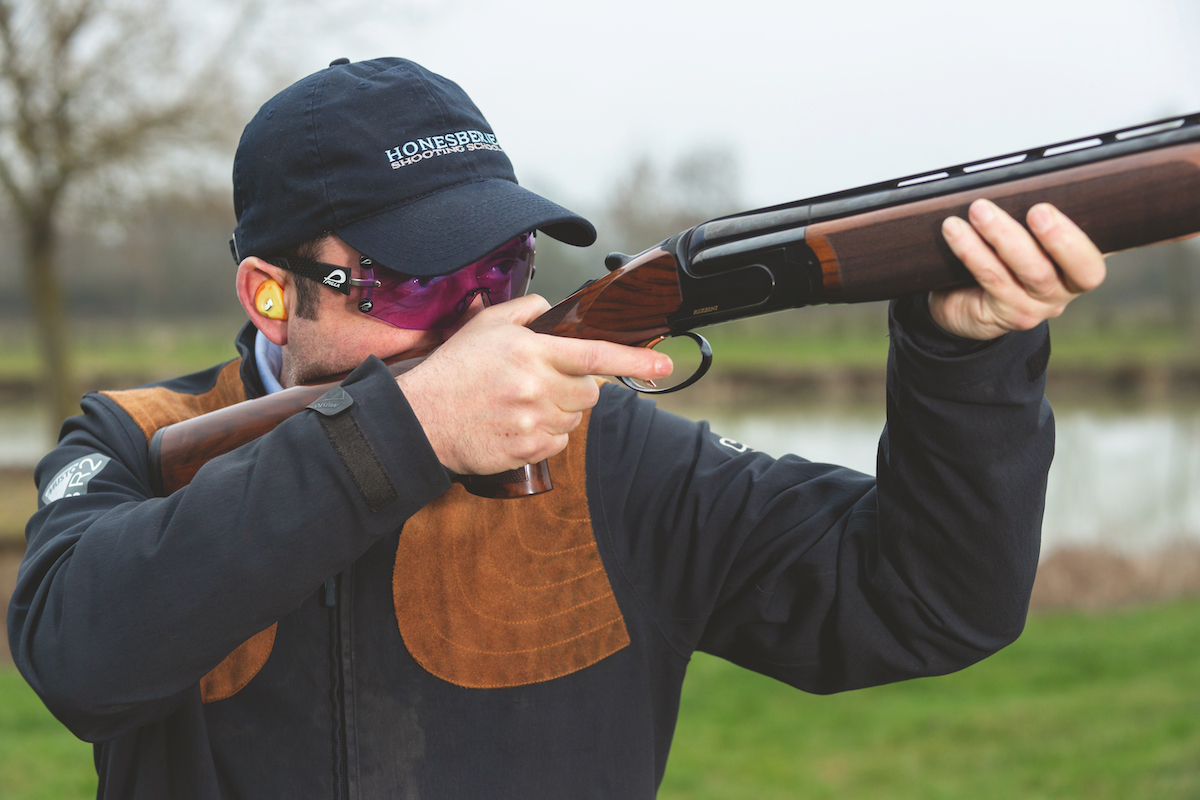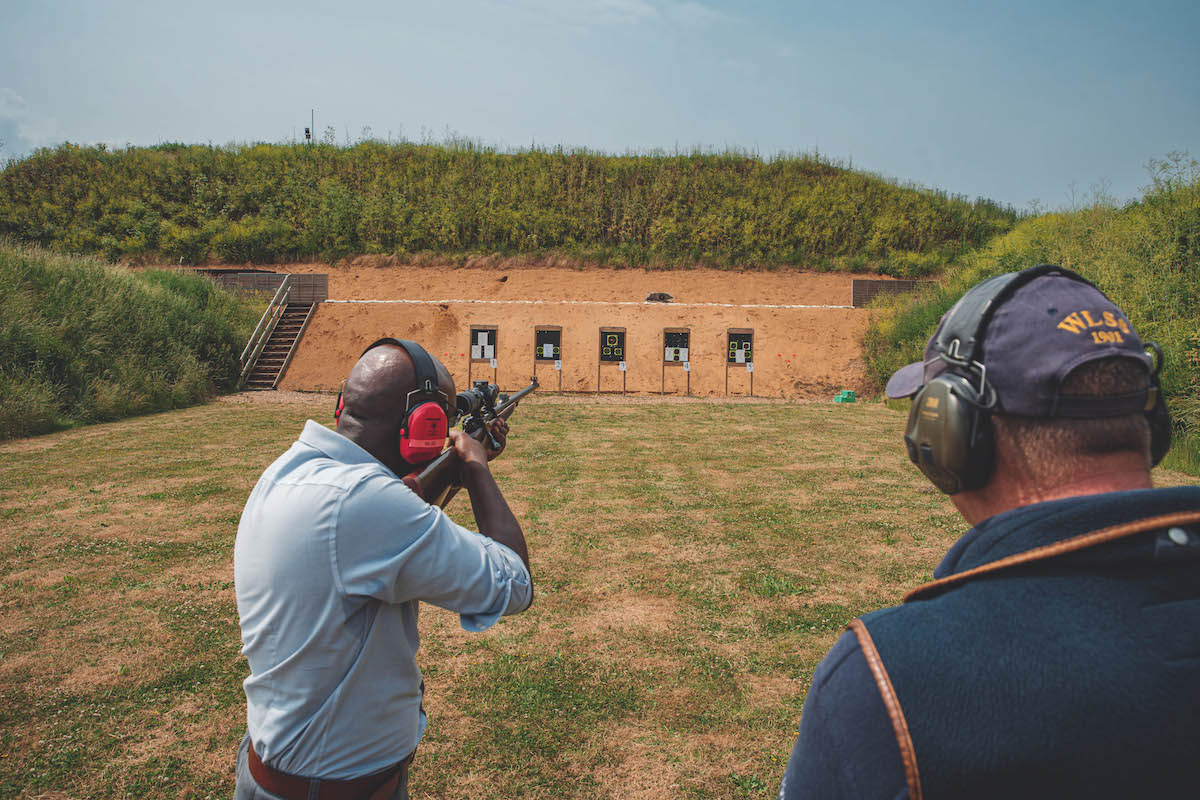Beat the flinch
The first step to curing a flinch is to admit you’ve got a problem at all, says James Marchington

No blinking or flinching here, but even experienced Shots can experience a degree of flinch
Do you flinch when you fire your gun? Most shooters will say no – and yet look what happens when they get a misfire. Without the anticipated noise and recoil, any tensing up and snatching the trigger is plain to see. Often they’ll feel foolish and laugh it off in the moment, rather than stopping to think about the problem it’s highlighted. There’s a lot of self-denial and shame surrounding the subject, with shooters not wanting to own up to being ‘soft’ or ‘frightened of the recoil’.
Let’s be clear that I am not talking about ‘trigger freeze’ here. That is a related but different problem where your trigger finger locks up tight on the trigger with the first shot, instead of releasing again. That prevents the trigger mechanism resetting, and stops you firing the second shot. That can be tied up with a flinching problem, but here I’m talking about the flinch itself – the shooter tensing up and even screwing up their eyes in anticipation of the recoil.
In my job I spend a lot of time taking photos and video of shooters in action and then editing the results on the computer – and I can assure you that most shooters flinch to some degree, many of them to such an extent that it simply must be affecting their performance.
As you’d expect, it’s most obvious in beginners. It would be unkind to show them here, but I have endless videos of new shooters with their eyes screwed tight shut as they pull the trigger. If you watch carefully, you can see their whole body tense up as they prepare to fire.
The hands grip tightly on the stock and fore-end, the arm and shoulder muscles lock up and the eyes are screwed up. In an extreme case, the shooter may turn their head away from the gun, moving their head off the stock in an attempt to avoid the noise and recoil.
That’s the extreme case, although it worries me to see just how many people on have-a-go sessions are doing exactly that. They surely can’t be enjoying the experience, and they certainly aren’t getting a good grounding in shooting technique.

Good gunfit and report, as Ben Husthwaite demonstrates here, are key
More experienced shooters tend to flinch less, but it’s still there to some degree, as my misfire example shows. The very top shooters, as you might expect, show the least tendency to flinch. Their technique is a joy to behold in slow motion video. Their gun-mount is precise and consistent, with minimal movement. When they fire, only the trigger finger moves; there’s no tightening of the grip on the gun, or tensing of arms or neck. As the gun fires, the eyes stay open, fixed on the target. The gun hardly moves in the shoulder. It seems almost inevitable that the target will break – and it usually does.
That’s what we should all aspire to, but it’s easier said than done. Flinching is a natural reflex reaction to an anticipated impact; we do it instantly and without thinking. In other situations it’s a valuable protection mechanism. If someone threw a handful of gravel at your face, of course you would duck and screw up your eyes; it’s hard-wired into us to protect the most vulnerable parts of our body. There’s no shame in it.
A flinch is harmful to good shooting in various ways. Clearly if you shut your eyes as you fire, you can’t be following the target accurately. The most obvious example of this is when a beginner shoots and asks “Did I hit that?” They’ve no idea, because their eyes were shut! But the flinch goes beyond just the eyes. The hands, arms and shoulders are involuntarily tensed as the shooter decides to pull the trigger. That is going to restrict the swing, and in a bad case may also pull the gun off line just as the shot is fired.
So what can we do to cure a flinch? The first vital step it to accept that it exists – it’s not ‘cowardly’ or ‘weak’, just something our bodies naturally do, which we need to work around.

Many beginners naturally shut their eyes when they first fire a gun
Curing a flinch
1. Minimise the recoil
Flinching is a reaction to the anticipated recoil, and is bound to be worse if you find recoil heavy and uncomfortable. So it makes sense to minimise the recoil your body has to take with each shot. Consider using a heavier gun, perhaps a specialist clay gun rather than making do with a game gun. Choose a cartridge that you find comfortable to shoot. That might involve a lighter shot load, but even the same weight of shot can feel less ‘thumpy’ in a lower velocity cartridge or one loaded with a more progressive burning powder. Ask your gun shop or cartridge supplier about the options.
2. Get the mount and fit right
A poor mount or gunfit can make recoil feel much worse. Over the years, shooting with a gun that didn’t fit properly, I had developed a bad habit of crouching, pushing my head too far forward and screwing my cheek down on to the comb. Not surprisingly, the recoil felt awful. To counter it, I was pulling the gun even harder into my shoulder and cheek, making things worse. It took a session with a good coach to show me where I was going wrong.
3. Reduce the noise
The noise of the shot is a big part of what makes us flinch, just as you jump if a balloon pops nearby. Ear protection is essential for shooting anyway, but some types of ear protection reduce the noise more than others. Consider upgrading to something that will muffle the sound as much as possible – such as a really good pair of well-fitting earmuffs.
4. Concentrate on the target
Recoil always feels worse when you’re shooting at a stationary target. That’s because you’re thinking about the gun and anticipating the recoil. The same can happen with a moving target if you start to dread the recoil. Your mind focuses on the gun, not the target. Let your mind reach out and focus on the target.
5. Let the recoil happen
You need to make sure that you strike the right balance between controlling the gun and fighting the recoil. Of course you must hold the gun firmly enough that it stays put, but you can’t stop it recoiling. If you try to, you’ll simply tense up and won’t swing smoothly. Make sure that you are letting the recoil happen and soaking it up – don’t try to fight it.
6. Follow the shot
People talk about ‘follow through’ without explaining what they mean. For me, it’s not just keeping the gun moving as you fire. It’s staying focused on the target until the shot hits. If you’re doing that, you can’t be blinking. Having started shooting with a spring airgun, I find it helps to imagine the shot as a single pellet and ‘follow’ it in my mind on its way to the clay. That’s just me, though – it may not work for everyone!
I suspect many readers will be telling themselves that this is very interesting, but they don’t have a flinch problem. If that’s the case, good for you. But if you’re so confident, I challenge you to ask a friend to video you shooting a stand with their phone in slow motion. The results might surprise you, in which case the advice above just might be helpful!

Top Shots like Richard Faulds are a joy to watch, shooting with no hint of a flinch








